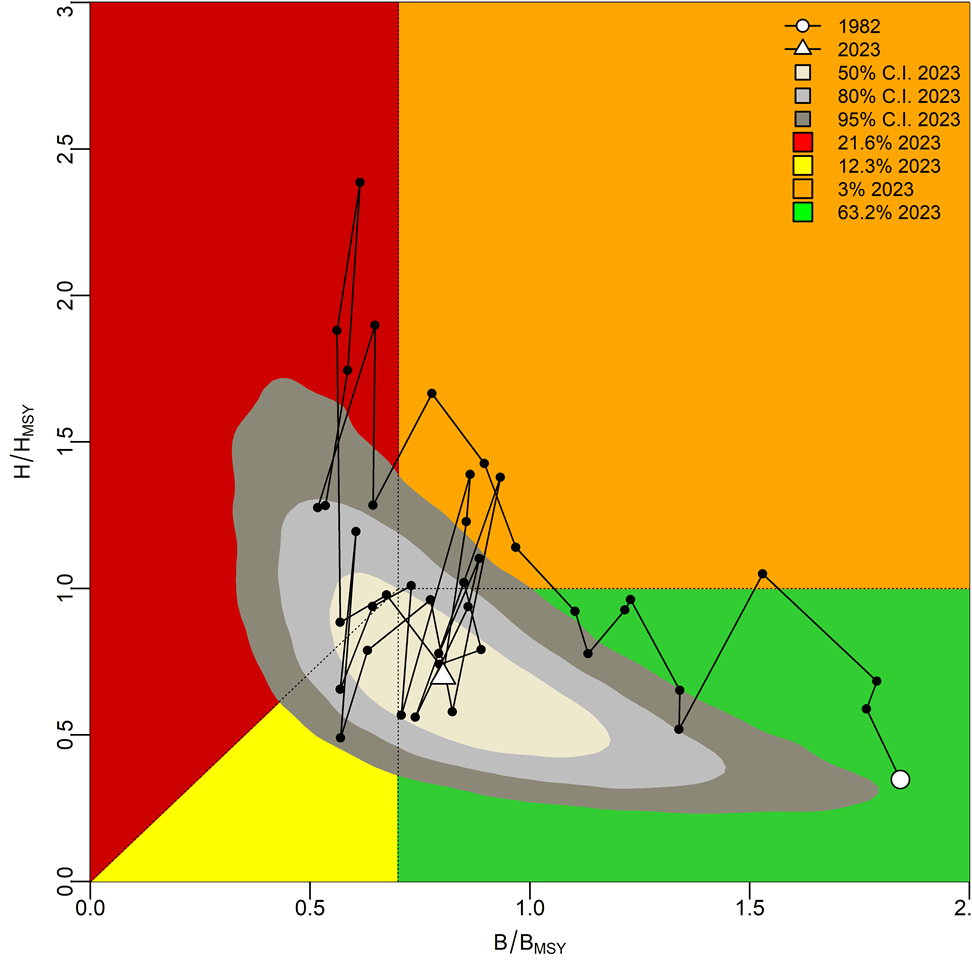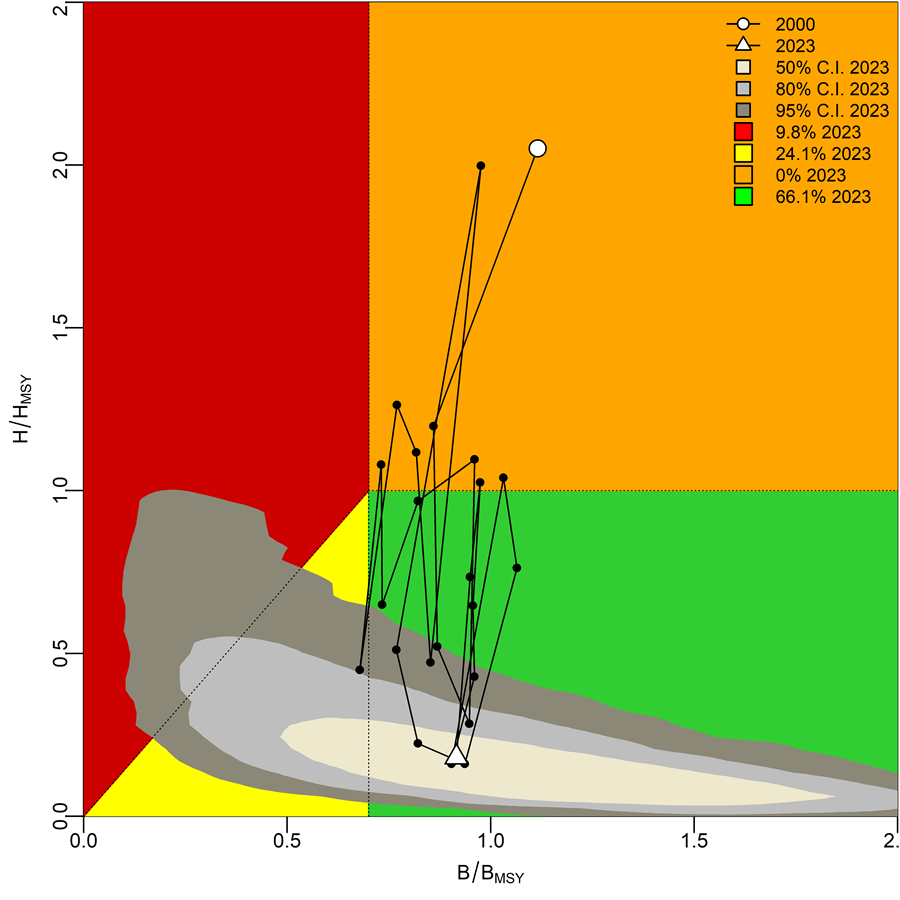United States Jurisdictional Bottomfishes
The bottomfish management unit species (BMUS) of the U.S. Jurisdictions in the western Pacific Ocean dwell in deepwater slope habitat and include deepwater snappers from the Etelis and Pristipomoides genres, in addition to a several emperors, groupers, and jacks. There are 11 federally managed bottomfish species in American Samoa, and 13 in each Guam and the Commonwealth of the Northern Mariana Islands (CNMI). Fishing is an integral part of the heritage, tradition, and culture of the local communities in these Pacific Islands.
Most bottomfishing has traditionally been done with hook-and-lines from small boats with outboard engines, primarily for subsistence or local sale. In recent decades, technology and the increased presence of larger vessels have allowed the fisheries to expand offshore into deeper waters around the islands. BMUS were previously managed as a multi-species complex in each jurisdiction by the Western Pacific Regional Fishery Management Council, but the most recent benchmark stock assessment in American Samoa was conducted at the species level. Progress towards the next benchmark stock assessments in Guam and CNMI have also focused on single-species analyses.
American Samoa
The 11 federally managed bottomfish species in American Samoa are Aphareus rutilans, Aprion virescens, Caranx lugubris, Etelis carbunculus, Etelis coruscans, Lethrinus rubrioperculatus, Lutjanus kasmira, Pristipomoides filamentosus, Pristipomoides flavipinnis, Pristipomoides zonatus, and Variola louti. These species are targeted by a small yet valuable boat-based fishery in depths ranging around 100 m to 400 m.
The current benchmark assessment for the American Samoa BMUS developed in 2023 differs significantly from all previous efforts. A major improvement for the 2023 benchmark was to move to single-species, age-structured models. The 2023 assessments integrated catch, an abundance index, and length data from four data sources: historical catches (pre-1986) from older reports; recent catches (post-1985) from boat- and shore-based creel surveys; length compositions from boat-based creel surveys and the biosampling program; and an abundance index from boat-based creel survey interviews.
Of note, two of the eleven bottomfish species could not be assessed due to either the presence of a confounded species in the data (E.carbunculus) or insufficient data (P. filamentosus). For these two species, we used indicator species from the 9 assessed bottomfishes. The species used as indicators were E. coruscans and P. flavipinnis.
The stock status in the terminal year (2021) for all nine bottomfish species was not overfished and that overfishing was not occurring (see figure below). Overfishing is defined by fishing mortality (F) in 2021 being higher than FMSY and overfished status is defined by spawning stock biomass (SSB) in 2021 being lower than SSB at the Minimum Stock Size Threshold.
 Stock status in 2021 of the nine BMUS species with single-species assessment models in the terminal year of the model.
Stock status in 2021 of the nine BMUS species with single-species assessment models in the terminal year of the model.
Guam and CMNI
There are 13 federally managed bottomfish species in Guam and CNMI: Aphareus rutilans, Caranx ignobilis, Caranx lugubris, Etelis carbunculus, Etelis coruscans, Lethrinus rubrioperculatus, Lutjanus kasmira, Pristipomoides auricilla, Pristipomoides filamentosus, Pristipomoides flavipinnis, Pristipomoides sieboldii, Pristipomoides zonatus, and Variola louti. The most recent benchmark stock assessment was developed in 2019 using a Bayesian surplus-production model (JABBA).
These assessments were done at the complex level in each jurisdiction using catch and catch rate (catch-per-unit-effort, CPUE) data of all BMUS species combined together. The primary data sources were the boat-based creel surveys and commercial fishing sales receipts through the most recently available year of data when the assessments were developed, which was 2017.
Guam
The Guam BMUS stock assessment was updated in 2024 with catch and CPUE data through 2023. This updated stock assessment suggested that the Guam BMUS were not overfished and were not experiencing overfishing in 2023, which indicated an improvement from the previous benchmark assessment, which had concluded the stock was overfished in 2017.

CMNI
The CNMI BMUS stock assessment was updated in 2025 with catch and CPUE data through 2023. This updated stock assessment suggested that the CNMI BMUS were not overfished and were not experiencing overfishing in 2023.

Publications
- Bohaboy, E. C., and T. Matthews. 2025. Stock Assessment Update of the Bottomfish Management Unit Species of the Commonwealth of the Northern Mariana Islands , 2025 Stock Assessment Update of the Bottomfish Management Unit Species of the Commonwealth of the Northern Mariana Islands , 2025. https://doi.org/10.25923/jjqw-sr33.
- Bohaboy, E. C., and T. Matthews. 2024. Stock assessment update of the Bottomfish Management Unit Species of Guam, 2024. NOAA Technical Memorandum TM-PIFSC-162. https://doi.org/10.25923/rmxw-gh78.
- Nadon, Marc O. et al. (2023). Stock Assessment of American Samoa Bottomfishes, 2023. https://doi.org/10.25923/0sd4-9a69
- Langseth, Brian J. et al. (2019). Stock assessments of the bottomfish management unit species of Guam, the Commonwealth of the Northern Mariana Islands, and American Samoa, 2019. https://doi.org/10.25923/bz8b-ng72